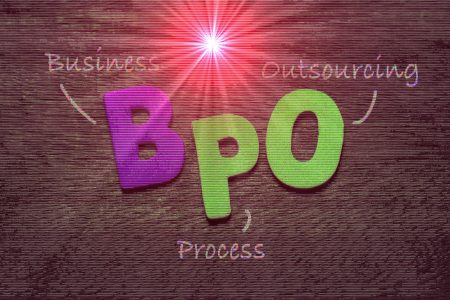Table 4
|
Separating parameters in functions |
The single biggest difference between Calc and Excel is that Calc uses semicolons to separate parameters in a function and commas for separating non-contiguous ranges. This usage is the reverse of Excel. |
|
Interpreting cell contents
|
In Excel if a cell contains text that can be interpreted as a number then Excel will in some situations attempt to do so. In Calc if a cell is defined as text, even if the cell contains a number then that cell is treated as it is defined as text, which typically means the numeric value zero. |
|
Form fields |
List boxes in Calc can either have multi-selection or not, whereas Excel has two multi-selection modes: multi and extend. In Excel the cell link returns the number of the selected option button. Scroll bars and spinners are not implemented in Calc, although numeric fields can optionally have spin buttons. |
|
Functions Statistical, engineering, and financial functions |
The statistical functions return slightly different results. They are the same up to at least 5 decimal places, but after that there is a discrepancy. Gnumeric (another open source spreadsheet package) returns exactly the same results as Excel (based on the author’s simple tests). |
|
Analysis Tool Pak functions |
The function EFFECT provided by the Analysis ToolPak for Excel is converted to EFFECT_ADD in Calc and returns the same results. |
|
Other functions not implemented / imported |
Only three other functions are not imported: INFO, GETPIVOTDATA, and HYPERLINK. Hyperlinks are supported but not as a function – use the Hyperlink button on the Function bar. |
|
Text to columns |
There is no option to do this in Calc. |
|
Solver |
There is no equivalent in Calc to the Solver add-in for Excel. |
|
Charts |
Chart types that Excel provides that Calc doesn’t: Bar of pie and Pie of pie converts to a 2D – columns – normal, Radar filled converts to 2 D and 3D – columns deep , Other charting issues include: Charts are slower to update in Calc than in Excel, There are fewer axis options such as no option for having an inverted y axis (negative at top towards positive at bottom), The data must be contiguous with the labels in the first row or column, To change the range, click on the border of the chart, so that it is |
|
Right aligned text
|
In Excel if text is longer than the cell can hold and right aligned and there is nothing in the cell to the left then the text “spills” into this cell. In Calc, the text will “spill” into the cell to the right if it is empty. |
|
Number formats
|
There is no “accounting” format (with the currency symbol at the left edge of the cell). A work around would be to have another column to the left that contains the currency symbol. There is no predefined option for bracketing negative numbers. |
|
Grid lines |
In Excel gridlines are a property of a Worksheet; in Calc it is an application-wide option |
|
Hidden rows
|
There is no “select only visible rows” command. Selecting a block of cells with hidden rows and deleting will delete the hidden rows as well. Workaround: select each visible row manually before deleting. |
|
Navigator
|
The Navigator’s main use would be for spreadsheet documents that have a lot of sheets. Right-clicking on sheet selection controls doesn’t display a dialog for selecting a sheet, so using the Navigator is faster than scrolling through the sheets. |
|
Stylist |
Calc has two types of styles: cell and page. Right click in the Stylist to create, modify, or delete styles. |
|
Sheet area combo box |
The sheet area combo box (left side of the Formula bar) shows the current range. It can be used to jump to a named range, but can’t be used to define a range (to define a range, use Insert > Names > Define or Control + F3). |
|
Function list
|
The Function list is a floating window that provides information about the available functions. It is an alternative to Auto Pilot Functions. |
|
Printing |
Calc and Excel have the same printing functionality just the location of where to get to the settings is slightly different. Unlike Excel, a print range must be specified first. |
|
Limitations
|
Calc only supports 32,000 rows compared to Excel’s . The maximum number of sheets in Calc is 256 (Excel is only limited by available PC memory). |
Table 5
SWOT Analysis
|
PROPRIETARY SOFTWARE |
|
|
STRENGTH Vendor professional Support . Easier to adopt in very large organizations Installation and support is provided by manufacturer . Intellectual Property protection. Security through obscurity
|
WEAKNESSES Expensive and Suffers hardware and software support. Dependent on a particular operating system vendor only. Costly license policy. Restriction are placed on users ability to use the software User cannot change how the software works (fix bug or add feature) or integrate with other software. Auditing of source code by users not possible. More Nag screens and time outs |
|
OPPORTUNITY Patenting software inventions promotes investment in research and development, and make huge profits. Patents accelerate software development by making previously unknown and not obvious software inventions public |
THREATS The opponents to software patents have gained higher visibility with lower resources. Arguments and critiques have been focused mostly on the economic consequences of software patents. |
FOSS
|
STRENGTH Cost Saving. Software developed in multi-user mode. Source code access . Community code reviews. Virtually virus free and limits the damages done by a virus. Bug fixation is quick and fast. Very secure in a multi-user scenario. Code quality. Security through public disclosure Personal auditing of source code by the users are possible |
WEAKNESS Initial difficulties to adopt in institutions as FOSS literates are very few in number. More expertise will be required. Very few training centers. Vendor supported FOSS software are a few, Even though they are coming up soon, as more adoptions take place. User resistance to learn is the main problem in adopting FOSS |
|
OPPORTUNITY The academic community is in the area of research. Many funded research projects produce software as part of their work. There is an increasing interest in making the outputs of such projects available under an open source, Easy availability of research oriented languages like “R” are an added benefit for research institutions, Also if such institutions do have the expertise, They can find it easier to modify the software for their own specific purpose |
THREATS Software patents may affect open source that do not have a large defensive patent portfolio. Open source might believe they are inventive in creating new ideas and software, but may be blocked from doing so by an existing patent originally created another person, that ends up blocking all uses without a proper license |







